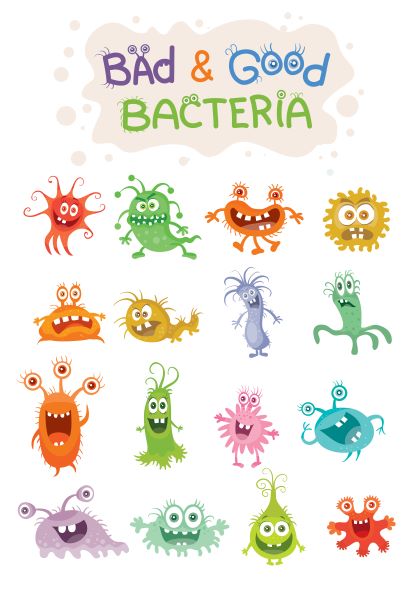One of the hottest topics in health and wellness is the gut microbiome. The human gastrointestinal tract is host to one of the most complex ecosystems on the planet. So important is the gut microbiome that it has been dubbed our “second brain” for its role in influencing our health. Let’s look at how what we eat, specifically a type of fiber called prebiotics, can positively influences the microbes in our gut.
Primer on prebiotics
Prebiotics, fiber-rich carbohydrates, are an important fuel or food source for beneficial microbes that already live in your gut. Almost all prebiotics are dietary fibers but not all dietary fibers are prebiotics.
What do prebiotics do?
They target the microorganisms already present in the gut acting as food to nourish them. Bacteria that reside in the gut, specifically lactobacilli and bifidobacteria, are the usual targets for prebiotics, helping these good bacteria stay healthy.
Why should we eat them?
Prebiotics help the good guys, that is helping the good microbes to flourish while keeping the bad or disease-causing microbes in check.The concept of prebiotics is relatively new, but it is well established that they can improve digestive health and emerging research shows that they can positively influence our immune system, improve calcium absorption (which can protect your bones), and keep blood sugar in check.
How much should we be eating?
Five grams of prebiotics eaten each day, from whole foods or as an ingredient in healthful foods is recommended for well-being. Whole foods like fruits, vegetables, and whole grains contain prebiotics but are present in low levels which is why prebiotics are being added to foods like bars, drinks, yogurts, cereals, and even chocolate. You would have to eat 10 bananas to get 5 grams of the recommended prebiotic fiber.
Prebiotics vs Probiotics
You are probably more familiar with probiotics than prebiotics. Probiotics, those active, live cultures found in yogurt, kefir, and some fermented foods are more well-studied for their ability to aid digestion, assist the immune system, help absorb some vitamins, and stabilize the gut bacteria when taking an antibiotic. Specific strains of probiotics can also help with specific health problems. For example, some probiotic strains can help manage lactose (milk sugar) intolerance or reduce symptoms of irritable bowel syndrome.
Prebiotics complement probiotics by feeding them. Simply put, prebiotics are the energy source for probiotics. They work together for good health…probiotics contain the live microbes that live in the gut and prebiotics feed them. Think of prebiotics as plant-food for the good microbes.
Which is better? Probiotics or prebiotics?
Both! Probiotics and prebiotics work in harmony to keep us healthy and improve well-being. Probiotics or prebiotics are not a cure-all. However, they can improve health to make the good bacteria strong to fight disease.
How Do You Know if a Food Contains Prebiotics?
Whole foods, including asparagus, bananas, garlic, leeks, oats, onions, legumes, and whole grains all contain small amounts of prebiotic fibers. Because they contain small amounts and the value of prebiotics is becoming abundantly clear, foods with added sources of prebiotics are becoming more popular and more available.
One of the most well studied prebiotics is called inulin (not to be confused with insulin!) One of the best studied prebiotics, inulin is found in the root of the chicory plant, as well as a few others, like agave. Extracting the inulin from chicory root is a natural process and the concentrated inulin can be added to foods to boost prebiotic intake.
The whole foods previously mentioned have naturally occurring prebiotics; for foods with added prebiotics, the amount of prebiotic fiber is included on the nutrition facts panel with dietary fiber, so it is hard to know exactly how much of the total fiber is prebiotic fiber. To know if a food has added prebiotics, check out the ingredient list and look for words like:
- inulin
- chicory root extract
- chicory root fiber
- fructo-oligosaccharides (FOS)
- oligofructose (OF)
Are prebiotics added to foods safe?
Yes, prebiotic fibers have been consumed since ancient times. It has been estimated that some hunter/gathers ate more than over 100 grams of inulin a day.Current research shows that up to 10 grams of inulin a day is well-tolerated in healthy adults.If you typically eat a diet low in fiber, as many Americans do, gradually increasing fiber and prebiotics, helps your tummy get used to the fiber without any side effects. And, inulin is deemed safe by the Food & Drug Administration, adding it to Generally Recognized as Safe (GRAS) list.
What foods have added prebiotics?
You can find prebiotics is some brands of yogurt, breakfast cereals, drinks, and bars. The following list is not meant to be exclusive, or an endorsement of any one food over another, but will give some specific foods that contain prebiotics.
LUNA® bar with prebiotics
Activia® pro and prebiotic dailles yogurt drink
Culturelle® supplements
Fiber Choice® gummies
Kellogg’s® Happy Inside Hi! Cereal
Lily’s® chocolate
Oikos® Triple Zero Yogurt
Premier Protein® ready-to-drink beverages
Summing It Up
Eat a healthy, plant-rich, fiber-rich diet for good gut health. Eating more plants equals a greater diversity of healthy microbes in your gut. Aim for an increase in a specific type of fiber, prebiotic fiber, to improve GI tract function and overall well-being.
If your “second brain” could talk it would tell you to:
- Eat more whole plant foods.
- Choose naturally rich prebiotic foods.
- Look for prebiotic enriched foods.
Here are two of my favorite websites for more information on prebiotics:
International Scientific Association for Probiotics and Prebiotics. Available by clicking here.
Dietary Fiber available by clicking here.
Chris Rosenbloom is a registered dietitian and nutrition professor emerita at Georgia State University. She is the co-author of Food & Fitness After 50. Follow her blog, Fit to Eat, by clicking here.


